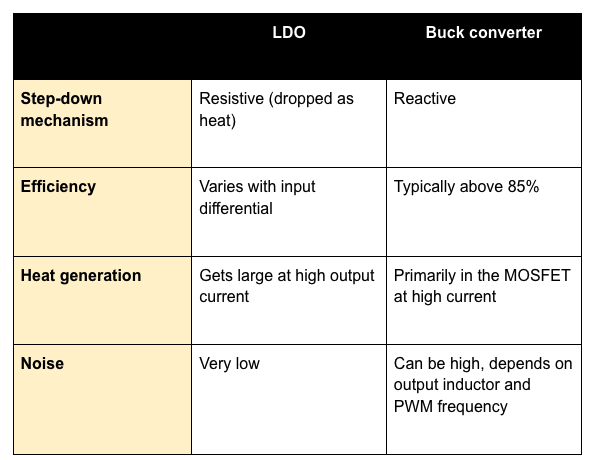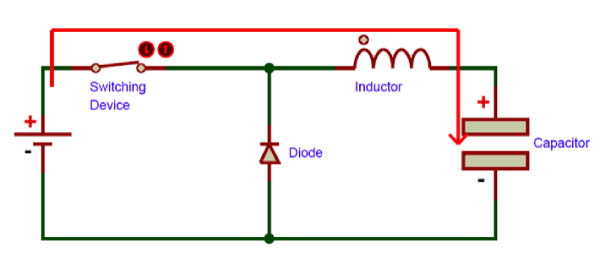High-Level Definition:
Buck converter (step-down converter) and linear voltage regulators (LDO) are both used as DC-to-DC power converters which steps down voltage from its input (supply) to its output (load).
High-Level Definition:
Buck converter (step-down converter) and linear voltage regulators (LDO) are both used as DC-to-DC power converters which steps down voltage from its input (supply) to its output (load).
In consumer electronic devices, buck converters and low-drop regulators are a hallmark of power electronics in these devices. Any device that requires more than one fixed voltage will use either a buck converter or LDO. Examples include:
At a high-level, when considering between the two options it’s important to establish the types of components that need power, and how much power they consume. As a refresher, different sensors & modules have a set operating voltage. For example, a lithium-ion battery can provide 24 V, but the MCU may need 5 V, while the hub motors of scooter need 12 V, etc.
Below is a table that lists differences between LDO’s and Buck converters.

When comparing the two directly, LDO’s hold main advantages in that they are:
The main disadvantages however are that when the input voltage is much greater than the output voltage, the component becomes increasingly inefficient (i.e. power not delivered is lost as heat)
Circuit Diagrams:

Reference Links: